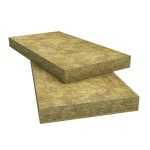Plants for an exotic garden. Lush or desert, the exotic garden is an invitation to travel and makes you dream. It is connoted with disproportionate foliage, dense plants but also touches of color. The only problem with the table: the temperatures in certain regions can compromise the sound growth of these plants that adhere to a hot climate. Before embarking on planting, it is necessary to know the hardiness of the plant, in other words, its resistance to cold and frost. Palm trees or cacti are numerous, and some species can tolerate down to minus 25 degrees. Discover a selection of plants and lots of expert advice to imagine a sublime exotic garden.
Good upstream preparation is essential before getting to the heart of the matter and choosing plants to create an exotic garden. We often forget it, but the park requires reflection for a relevant layout like the house’s interior. To create an unfamiliar style, it is first necessary to know if we are thinking of a mineral garden with cacti and stone, for example, or opt for a plant garden with a jungle spirit. And color. Depending on this choice, the plants are carefully defined according to the garden exposure. With shallow temperatures, some tips can overcome this problem. Follow the advice of Pierre-Adrien Lagneau, head gardener at Truffaut, and Romain Couteaux, landscape designer DPLG at the head of the Rc-Paysage agency, to imagine an exotic garden and Plants for an exotic garden.
Check the hardiness of plants
The critical point to imagine a beautiful exotic garden with blooming plants, they must withstand the temperatures of the place where they evolve. “Most often, flowers with a new features do not have the stability to cold, suggests Pierre-Adrien Lagneau, head grower at Truffaut. But some are exceptions! We can also put plants in pots and bring them in winter or install them in a greenhouse.
Color and escape
A lush jungle spirit or in an arid desert style, the exotic garden comes in several appearances. Here is an overview of the possibilities with different plants adapted to metropolitan climates.
The palm tree, the benchmark of the exotic garden

The palm offers many varieties with high resistance to cold and as many possibilities as there are gardens. It just needs a little attention, especially in the South, with attacks of butterflies that nibble their trunk.
Balcony decoration
The hemp palm or Chinese palm can survive temperatures of minus 18 degrees. The needle palm is the plant which is used hanging Plants for Balcony in china for its cold hardiness. The Sabal Minor also holds down to minus 18 degrees. And the Chilean coconut palm (Palmier jubaea chilensis) can reach 4 or 5 meters in height while resisting minus 15 degrees.
Observe to create the correct associations
Before going to the shelves of a garden center, looking at the marriages of plants that you like to recreate the desired atmosphere is necessary. “There are as many types of exotic plants as there are landscapes,” recalls Romain Couteaux. “To get a little idea, you can look at magazines or images on Pinterest to understand the organization of the garden and how plants come together. . Our eye is used to seeing plant marriages. Some of them work naturally.
The landscaper delivers his favorite exotic plant associations: “In a tropical environment, it is preferable to create contrasts of textures and colors with the leaves and flowers by touch without forgetting to make large beds. I like to associate red cordylines. With blisters, ferns, bananas, elephant ears, ground cover demographic, spathiphyllum, cycads, porcelain roses, ornamental ginger, Monstera, variegated Provence canes, Magnoc seaside, crotons, papyrus, etc.
Give the sensation of a vegetal density
“The characteristic of an exotic garden is its density. Exotic plants are conducive to having volume. They are also original and can be the starting point for imagining contrasts or playing with colors and textures. The impression of luxuriance with huge leaves summarizes Romain Couteaux. To have this atmosphere, we can work all the layers of the garden with plants at different heights: cover them -soils, tree plants, pots at different levels, etc.
Choose a suitable container for sound development
“The container must be large enough, in general, but not too much at the start, advises Pierre-Adrien Lagneau. The soil in the pot needs to be well-drained. The pool is thus pierced and preferably made of terracotta to guarantee a better heat exchange. Especially since exotic plants need to be in full sun, plastic should therefore avoid! Ith the desire to have a dense and abundant exotic garden, the planters and pottery are to be defined with care.
Bring beneficial humidity to the tropical garden
“When we can provide misting, it’s a bonus!” Says Romain Couteaux. This delicate, compressed rain will help exotic plants to develop better and grow well. It also recreates a tropical atmosphere. To do everywhere, it is ideal in a courtyard or a closed garden, a patio. But that cannot do.
An almost essential reflex for a tropical garden
In the garden, mulching is natural protection with many advantages, especially when the plants require a lot of water. “Mulching measures between 5 cm high at least and 10 cm at best, specifies Pierre Adrien Lagneau. It will keep humidity, avoid too much maintenance to weed, and protect the roots in winter. Several possible techniques with mulching of hemp, of BRF (fragmented branch wood), which are shavings of wood, cocoa, stone, etc. The best is to opt for a vegetable mulch that degrades itself and recreates natural humus. Stone is helpful for cacti or agaves, which require little water.
Go a little further
Around your home or during a Breton trip this summer, the gardens of Kerala in the Côtes d’Armor are worth a visit with many micro-climates and sheltered temperatures. There are gunneras, for example, and other incredible exotic plants.
More news on Plants and flowers
- Decorative flowerpots to invite nature inside
- What plants by the pool?
- A garden with palm trees in 13 inspirations
Also Read: ARTS AND CRAFTS




















